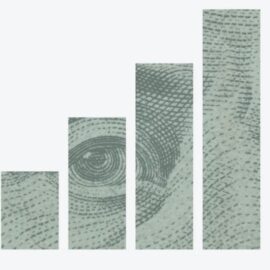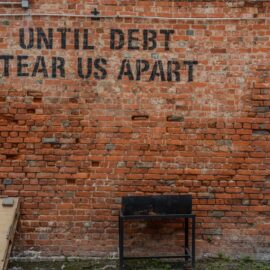

This article is an excerpt from the Shortform book guide to "One Up On Wall Street" by Peter Lynch. Shortform has the world's best summaries and analyses of books you should be reading.
Like this article? Sign up for a free trial here.
Are you a risk-averse investor? What kind of stocks should you invest in to mitigate the risk of losing money?
Perhaps the first rule of thumb for any kind of investing is to build a portfolio that reflects your tolerance of risk. If you have a low tolerance for risk, you should pick secure stocks that already have a track record of success.
Here’s how to build a low-risk stock portfolio, according to Peter Lynch.
Build Your Portfolio Based on Your Risk Tolerance
To create a portfolio you feel comfortable with, take into account the risk and gain associated with each stock type, recommends Lynch. Then, acquire stock types that give you a risk vs. gain ratio you can live with. The risk versus gain ratio for each company type is:
Low risk, low gain: Slow-growth companies
Low risk, moderate gain: Dependable companies
Low risk, high gain: Hidden-treasure companies (provided you’re sure of the company’s assets) and cycle companies (provided you understand the company’s cycles)
High risk, high gain: Fast-growth companies or underdog companies
Building a Low-Risk Stock Portfolio
In I Will Teach You to Be Rich, Ramit Sethi recommends distributing risk among various types of stocks. He adds that distributing your assets intelligently to mitigate risk is more important than finding perfect companies to invest in. Therefore, risk-averse investors should spend more time thinking about the risk distribution of their portfolio than researching a particular company.
Sethi also breaks stocks into different categories than Lynch and recommends investing not in slow-growth or dependable companies, for instance, but rather in domestic or developed-world international stocks. He specifically recommends using the following asset distribution:
- Invest 30% in domestic stocks
- Invest 15% in developed-world international stocks
- Invest 5% in emerging market stocks Invest 20% in real estate development trusts
- Invest 15% in government bonds
- Invest 15% in treasury inflation-protected securities

———End of Preview———
Like what you just read? Read the rest of the world's best book summary and analysis of Peter Lynch's "One Up On Wall Street" at Shortform.
Here's what you'll find in our full One Up On Wall Street summary:
- Why individuals fare better in the stock market than professionals and firms
- A no-nonsense approach to the stock market
- Why you shouldn't follow the complex predictions of so-called professionals






